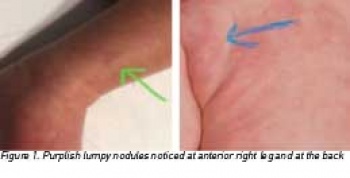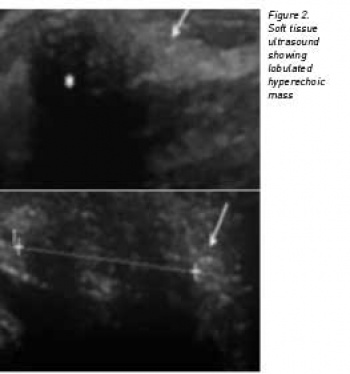ENDOCRINOLOGY
Neonatal hypercalcaemia with subcutaneous fat necrosis
A rare case of subcutaneous fat necrosis with hypercalcaemia in a newborn
July 11, 2020
-
A newborn boy was admitted to the special care baby unit (SCBU) from theatre, for worsening respiratory distress. Despite initial stabilisation with non-invasive ventilation, IV fluids and empiric antibiotic therapy, his first and subsequent venous blood gases (VBGs) at 30 and 60 minutes of age were quite acidotic with high pCO2. He then required further resuscitation, intubation and transfer to tertiary care for management of persistent pulmonary hypertension of the newborn (PPHN).
He was born full term, by emergency caesarean section due to meconium stained liquor and cardiotocography (CTG) irregularities. He did not qualify under the eligibility criteria for ‘therapeutic hypothermia’.
His 10 days spent in the neonatal intensive care unit (NICU) was uncomplicated, although he did require invasive ventilation including nitric oxide for three days and had received five days IV antibiotics for presumed culture negative sepsis due to raised C-reactive protein (CRP) levels. He was then transferred back to SCBU for ongoing respiratory support (0.1 litre O2 via nasal cannula), establishing feed and neonatal jaundice monitoring.
On day 12 of life, the SCBU nurse noticed a palpable, non-tender purplish coloured lump measuring (2 x 3cm) at the front of right leg (shin), one lesion (2 x 2.5cm) on the upper part of back (see Figure 1) and two (0.5 x 1cm) each on right buttock. Hypercalcaemia was noted as an incidental finding during blood investigation for neonatal jaundice. Total adjusted and ionised calcium levels were raised and parathyroid hormone (PTH) was normal. The renal ultrasound was also reported as normal. The baby was started on a low calcium formula (LoCaSol) after a dietitian review. His vitamin D supplements were stopped for a while. Calcium levels normalised after three weeks and the lump self-resolved after two months.
 (click to enlarge)
(click to enlarge)

 (click to enlarge)
(click to enlarge)